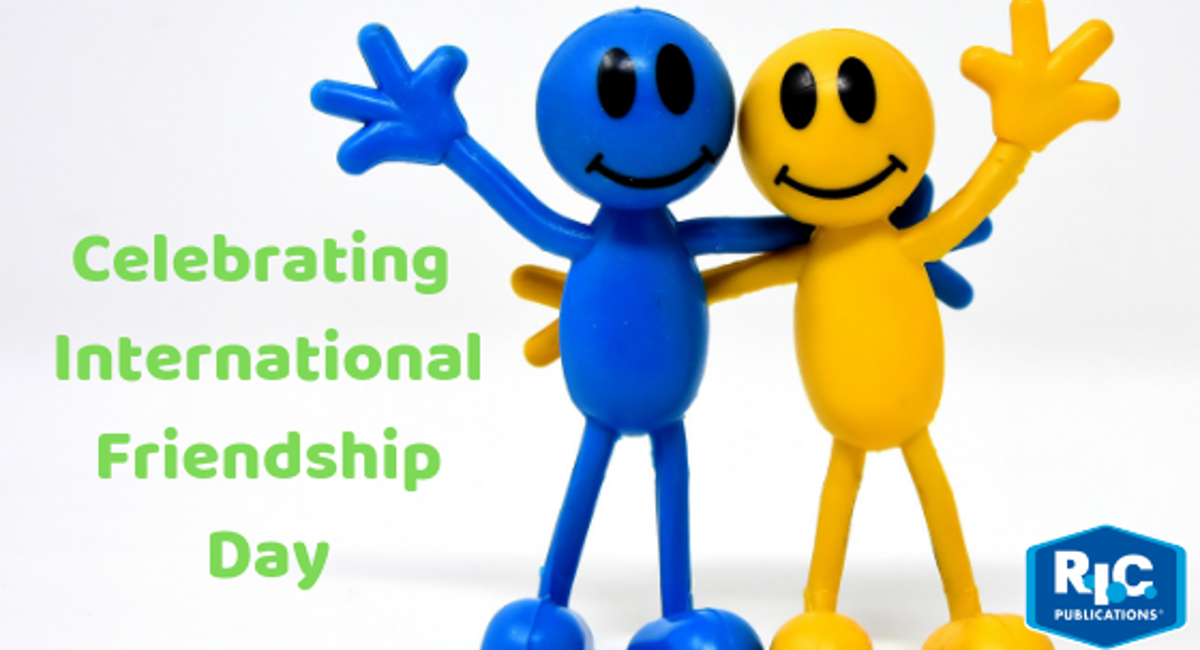- Tuesday 16 July 2019
- 0 Comments
International Friendship Day is a time to consider the importance of friends in our lives. Try these 'friendly' classroom activities to understand and celebrate the positive effects of friendships.
- Prepare and give small presents, like biscuits or chocolate, tied in bundles of cellophane with bright ribbon.
- Make a friendship band.
- Make a special 'friendship book' for a good friend, with photos, a drawing, poems or a story about your friendship.
- Read and share stories about friends. Discuss things you may do or feel that are similar.
- Discuss how we can best be a good friend. How can we make school/home a happier, friendlier place? How do you feel when someone is kind to you? How do you feel when you are kind to someone?
- Create a poem titled 'A friend like you', or write an acrostic poem using the word 'FRIENDS'.
- Write about what a friend means to you. How do you help each other? What do you do? What makes a friendship special?
- In small groups, brainstorm to make a list of what friends do together. Share the lists, combine and create a class list for display.
- Make a class friendship book. On each page, select and write an idea from the group brainstorm. Illustrate each and bind to create a class booklet.
- Write clues to describe a friend. Display. Allow students to guess who they think it is.
- Read and discuss You are special by Max Lucardo.
- Design a 'Friendship' poster with words like fun, love, trust, honesty etc.
- Make a friendship rainbow. Trace around students' hands. Paint groups of them in different rainbow colours. Cut out and write names on the hands. Arrange to make a colourful friendship rainbow.
- Read A rainbow of friends by P K Hallinan. The text sends the message that friends come in all shapes, sizes and colours; and should be valued for their diversity. Discuss the text after reading. Who were the characters? What happened in the story? What did you learn about friendship? What are friends? What are friends like?
-
What is a good friend? Brainstorm to list on the board a bank of words about positive qualities that good friends should have. Read through the words with the students and ensure they know what each word means. Provide each student with a white cloud shape (pre-cut for younger students) or ask students to draw their own to fill an A4 piece of paper. (Drawn cloud shapes should then be cut out.) The students write their names in the centre of the cloud. Provide students with strips of different coloured paper, and ask them to select words from the board (positive qualities) they think they have, that make them a good friend. Students write each one on a different strip of coloured paper, then glue or staple their rainbow of positive qualities to the bottom of the cloud. Hang to display.

If you’re looking for literature with a ‘friendship’ theme, consider using these:
- Bad apple: a tale of friendship by Edward Hemingway (K–2)
- Friendship according to Humphrey by Betty G. Birney (Years 2–4)
- Owen and Maze: The true story of a remarkable friendship by Isabella Hatkoff, Craig Hatkoff and Paul Kahumbu (K–5)
- A friendship for today by Patricia C McKissack (Years 5–8) (Adult themes)
- The friendship by Mildred D Taylor (Ages 10+) (Adult themes)
- A beautiful friendship (A Star Kingdom science fiction novel) by David Weber (Ages 12+)
- When friendship followed me home by Paul Griffith (Ages 10+) (Adult themes)
How are you celebrating International Friendship Day?
We would love to hear about it in the comments below.
